Dalgona candy, also known as ppopgi, was a popular childhood snack in the mid-1950s. It resurfaced early on in the Pandemic due to the popularity of the Netflix show Squid Game, in which the candy was given its 15 minutes of fame once again.
The significance of dalgona sugar candy is drawn not only from its taste, but also from layers of nuance and cultural context. This traditional Korean sugar candy is made of sugar and baking soda, but there’s so much more to it than that.
Its recent resurgence evoked childhood memories in many Koreans who grew up during the postwar era, contributing to the candy's renewed popularity. So below is a complete look at dalgona candy in history, in pop culture, and coffee shops, plus a few recipes for making & using dalgona at home.
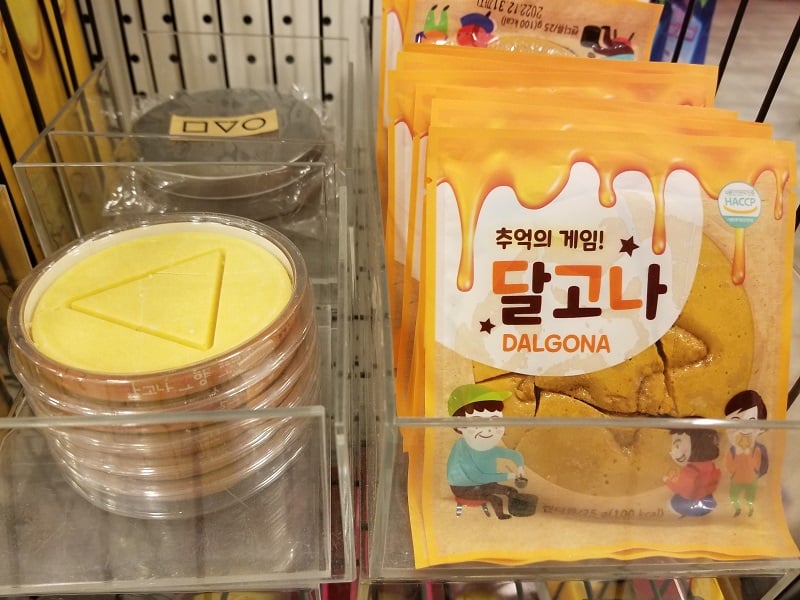
Jump To
History of Dalgona in Korea
Dalgona candy filled a sweet void for children in postwar South Korea, who had grown accustomed to the free chocolates distributed by American soldiers. Unable to afford such treats regularly for their children, South Korean parents created their version of honeycomb toffee sweets, using heated sugar and baking soda.
This combination would result in an airy candy with a sweet beginning and a slightly bitter finish. During that time, there weren‘t many sweet baked goods available for children, so this was the height of luxury in the 1950’s. Home baking was virtually unheard of and having an oven was a rarity.
Its simplicity is relevant, because it’s a treat invented following the end of a tragic civil war overseen by foreign powers. Because of the low cost of production, South Korean street vendors began selling the treat everywhere.
It was traditionally melted in the shape of large lollipops, with simple designs like hearts or stars pressed into the center. In the mid-1950s, the toffee-colored honeycomb candy became popular and was sold outside elementary schools and toy stores.
Some say it originated in seaside Busan in the 1960s, but most historical records trace its roots even further back. There was little to look forward to in those days except for these peddled sweet treats. Part of the attraction was seeing the candy being made in front of you, and another part is the fun game that comes with it.
First, you’ll watch these street food candy makers melt sugar in a soup ladle. They froth it with a pinch of baking soda. Once the mixture starts to foam up, it will look similar to whipped coffee and that’s when it turns into dalgona sugar candy.
They then press the mixture flat and push shapes into the center, such as a circle, triangle, square, star, or umbrella (the famous Squid Game candy). Now the fun part.
School children take turns picking out the stamped shape without breaking it — whoever wins it by removing the shape inside the brittle candy receives another dalgona candy.
Dalgona candy and the children’s game are both known as ppopgi. Also known as Korean sugar candy, it’s basically an old-fashioned sugar candy made with just two ingredients - sugar and baking soda. With a hard and honeycomb toffee-like texture, dalgona sugar candy has a bitter, nutty, and sweet flavor profile.
Sugar was still scarce in the early 1960s after the war, and even as late as into the 1980s, plus not all vendors had access to food-safe cookware. As a result, some dalgona was made with corn syrup substitute in tin ladles that melted over the heat.
This further increased the notion that this post-war era sweet treat is toxic; “they’re not good for you” as many South Korean moms will tell their children, or “empty calories” as we say these days.
Though street vendors peddling dalgona sugar candy began to disappear by the early 1980s, many Koreans who grew up during the postwar era hold good memories of eating and playing ppopgi dear to their hearts and minds.
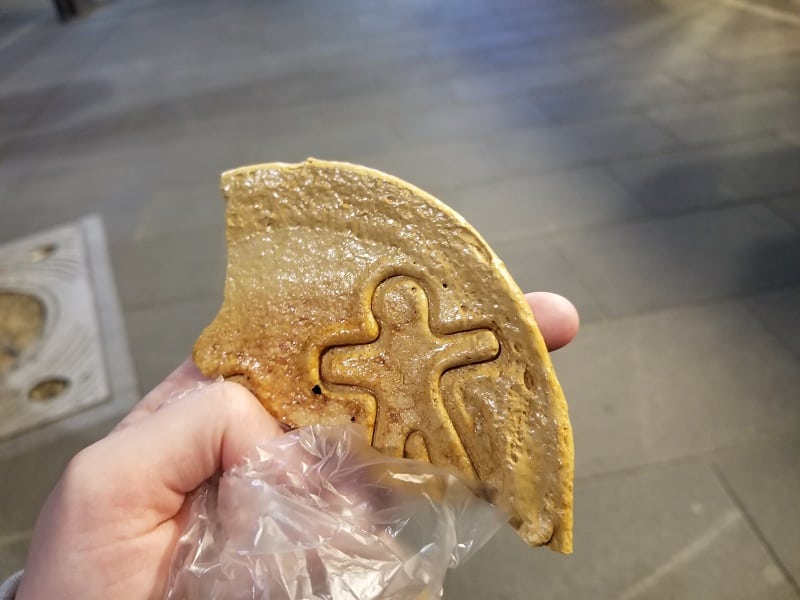
Squid Games Candy (Dalgona's Resurgence)
Korean dalgona candy has made a comeback as a retro, nostalgic snack as a result of its appearance in the Netflix show “Squid Game.” People remember not only the flavor but also the fun that comes with it.
It’s one of the earliest forms of competition among Korean kids; the objective of ppopgi is to remove the indented shape without breaking it. It’s actually a playground game in Korea, even these days!
The name ppopgi is derived from this; it means "picking out." Don't be fooled by its apparent simplicity; it’s not an easy task. Dalgona candy is brittle and easily breaks, even when freshly-made.
Exceptional fine motor skills are needed to even have a chance at winning. Kids try cutting around the shape with their hands, poking around the pattern with a needle or toothpick to release the shape, or even moistening it free by licking it.
For young kids, a free second ladle of sugar is definitely worth fighting for! It's resurgence is largely thanks to the popular Netflix show featuring this 'Squid Games candy,' but I humbly believe it deserves a place in the spotlight, not just in our hearts and minds.
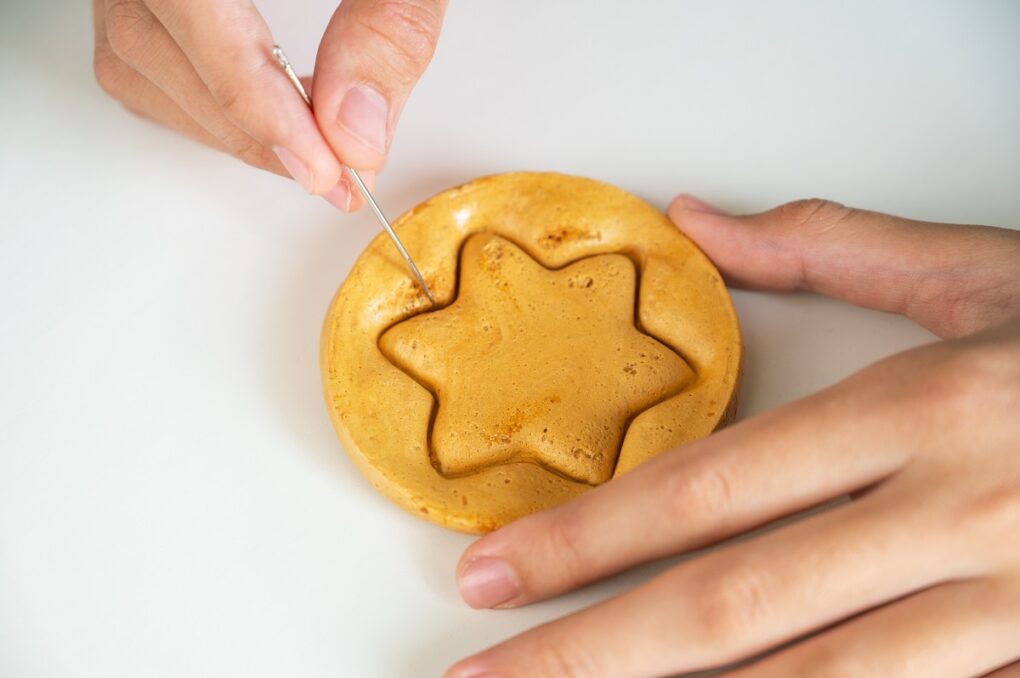
Dalgona Coffee Origins
Dalgona coffee came well after the iconic dalgona candy, but now it’s just as popular. Dalgona coffee is a whipped instant coffee drink with ice and milk. It’s considered a sweetened beverage, because the typical instant coffee used is 3-in-1 coffee, creamer, and sugar.
Dalgona coffee, however, does not contain dalgona candy at all. Traditional dalgona candy is brittle and hard and is sometimes used as a topping to beverages in cafes, but it cannot be directly melted into a topping.
To make dalgona coffee, sweetened instant coffee is beaten into a thick foam with sugar and water. Making the instant coffee mixture fluffy is all in the wrist. You need to use a hand mixer to whisk the blend until it forms a thick, foamy, toffee-colored froth cloud.
The quick whisking required to achieve the delicate froth on top is messy and time-consuming, but the end result is a creamy and milky treat with a delightful texture. It is then scooped into a cup and layered over ice and milk before serving. As you drink it, the beverage’s creamy head will mix with the milk.
Dalgona coffee can be traced back to a January 2020 episode of Pyeon-storant (a portmanteau of convenience and restaurant, the segment "Stars' Top Recipe at Fun-Staurant"). Celebrity guests compete in a friendly competition to showcase interesting recipes on the show, and that episode featured this unusual drink from Macau.
In Macau's Hon Kee Cafe, the owner prepares a drink made from instant coffee for actor Jung Il-woo. In that episode, after taking a sip of the cold confection, he exclaimed, "Wow, it tastes just like dalgona!".
The name "dalgona," comes from the Korean "달구나" (dal-goo-nah), which translates roughly to "it's sweet." It is also the name of the traditional honeycomb toffee snack sold by Korean street vendors, described above.
Following that episode, TikTok user @imhannahcho famously filmed her attempt at recreating the drink given to Jung on the variety show, which became the subject of a viral internet challenge. Her original post has received over two million likes, and the #dalgonacoffeechallenge hashtag on TikTok has over seventeen million views.
Through the viral internet challenge, many people began attempting the recipe at home, and Korean coffee shops began incorporating it into their menus. The name Dalgona Coffee was coined in that January 2020 episode, but it's really just a simple innovation to instant coffee; a few other countries had even popularized it prior to its internet spread.
For example, Phenti Hui Coffee or Desi Cappuccino is a popular drink in India with a long history. Unlike dalgona coffee, though, it’s not layered but simply mixed together. Dalgona coffee is also similar to a type of iced coffee invented in Greece in 1957.
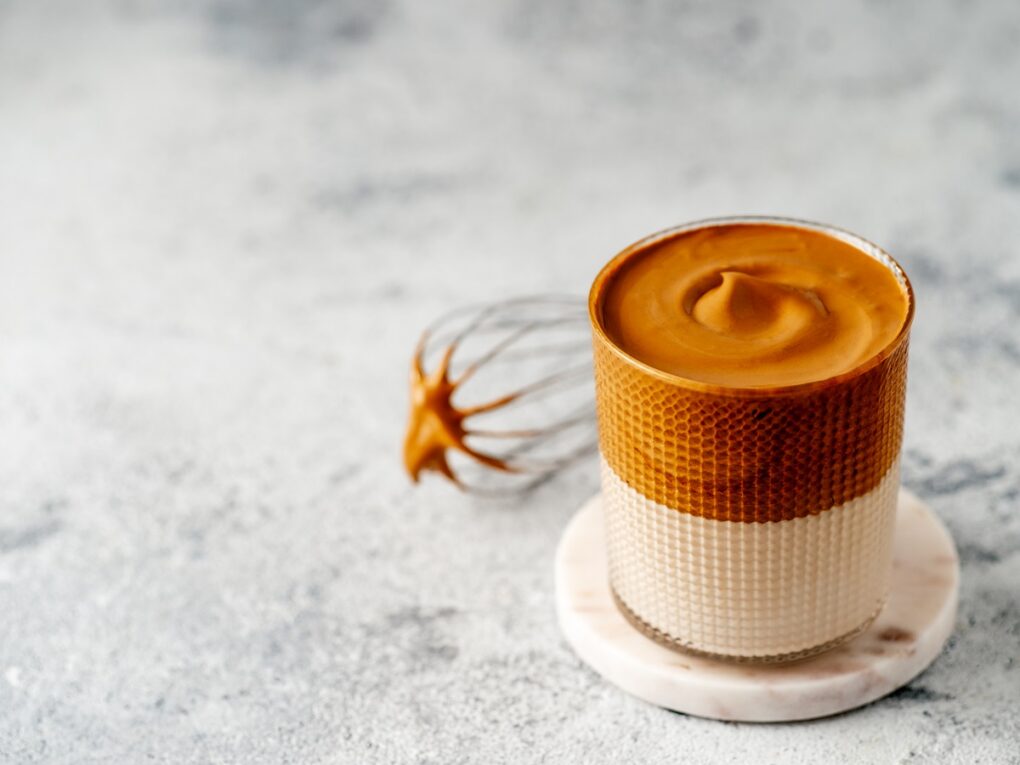
Dalgona Recipes
One of the reasons people have fallen in love with this fluffy coffee is its cloud-like consistency. While it's definitely not easy to make, every sip has a frothy elegance that can only be surpassed by the sense of accomplishment that comes from putting in the effort, so it’s still worth it to try.
Dalgona (Korean Sugar Candy)
Want to try your hand at making the popular Dalgona candy? Here’s a simple recipe that you can follow. Find out if it’s as toffee-sweet as they say it is, or if you can indeed lick the shape out of the candy to win a prize.
Dalgona Coffee Mousse
This decadent dessert consists of layers of coffee mousse and cake topped with dalgona candy. You won’t want to miss out on this intense coffee treat.
Dalgona Coffee
Not actually made with the popular candy, instant coffee is whipped to a fluffy consistency and then layered over milk and ice. If you haven’t tried it, we suggest that you do!
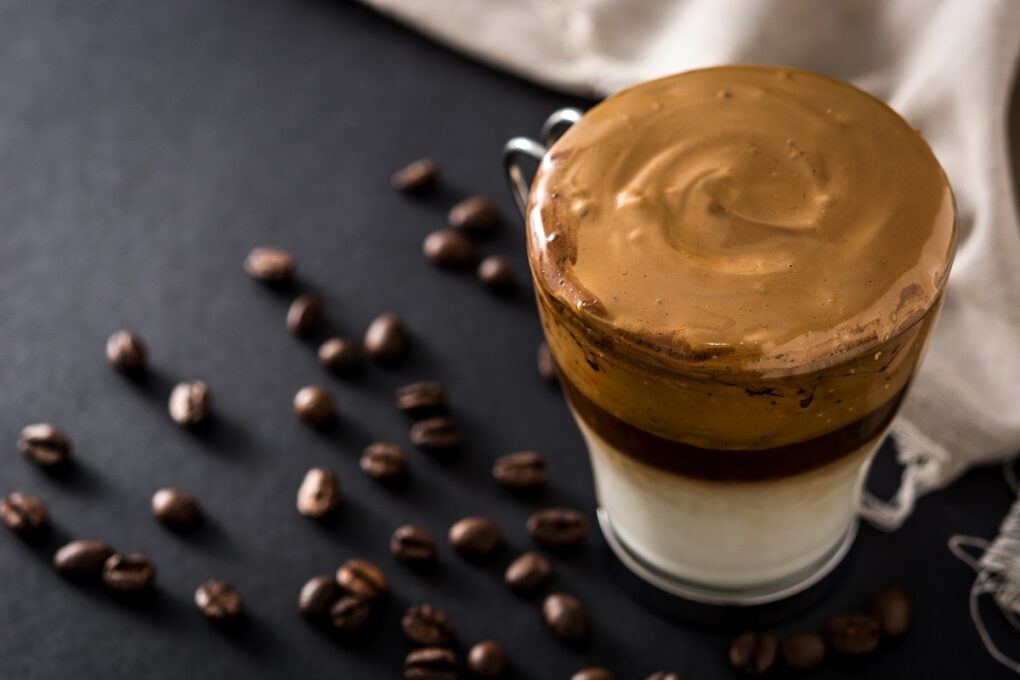
Dalgona Candy FAQ
What does dalgona candy taste like?
Dalgona candy has an overall sweet flavor with a nutty taste similar to toasted or burnt marshmallows. The caramelization process gives a light, toffee-like texture to the candy.
How is dalgona candy made?
You only need two ingredients to make Dalgona candy - sugar and baking soda. Sugar is melted over an open fire, and then a small pinch of baking soda is added. The color of the liquid sugar will change to a light caramel, and the texture will become slightly puffy.
This liquid mixture is quickly poured onto a silicone mat to flatten, and a mold is imprinted on top of the candy to make symbol indentation. Once the candy cools down, it hardens and becomes brittle, but also becomes airy and full of holes (like a honeycomb) inside the candy.
Stir the baking soda into the sugar slowly and thoroughly. At that point, the sugar can still burn and the candy can become overly bubbly if too much baking soda is added. If you press the cookie cutter too soon or too deeply, it will also be difficult to remove.
Why is it called dalgona candy?
The word dalgona in Dalgona candy is derived from the informal Korean word "dalguna (달구나)" which means "it's sweet." It’s meant to describe the sweet traditional candy that became popular during the postwar era, but is now also used to describe a popular coffee beverage.
Is there a real game for dalgona candy?
In Korea, the traditional dalgona sugar candy and a game attached to it are both known as Ppopgi. In the challenge, players must carefully cut out a shape that is imprinted in an easy-to-crack, paper-thin sheet of sugar honeycomb.
One can use a needle, toothpick, or any number of other inventive ways to remove it. If the honeycomb cracks, you lose. The game became popular once more through the Netflix show Squid Game and on TikTok, with people trying the #honeycombchallenge for themselves.
What are the ingredients in traditional dalgona candy?
Also known as Korean sugar candy, dalgona is a type of honeycomb toffee made from two ingredients - sugar and baking soda.

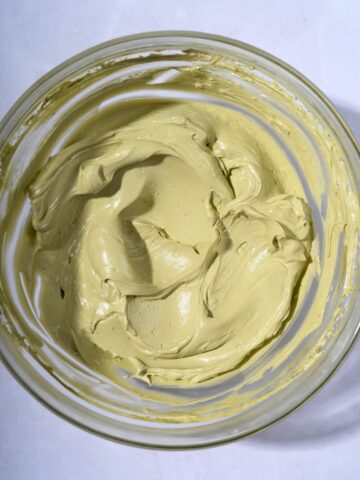

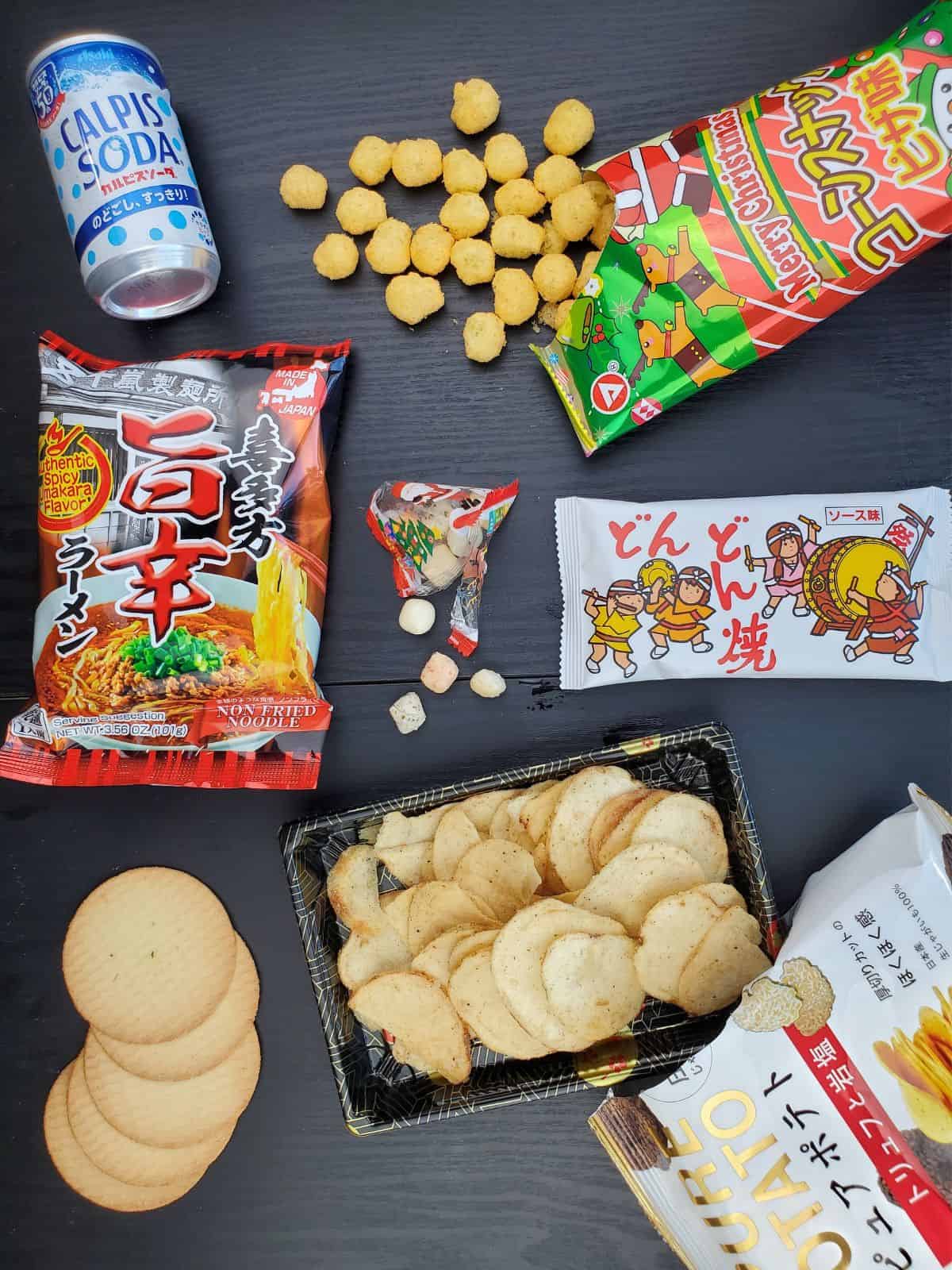
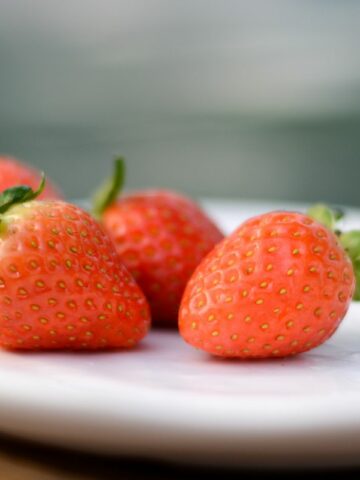
Comments
No Comments